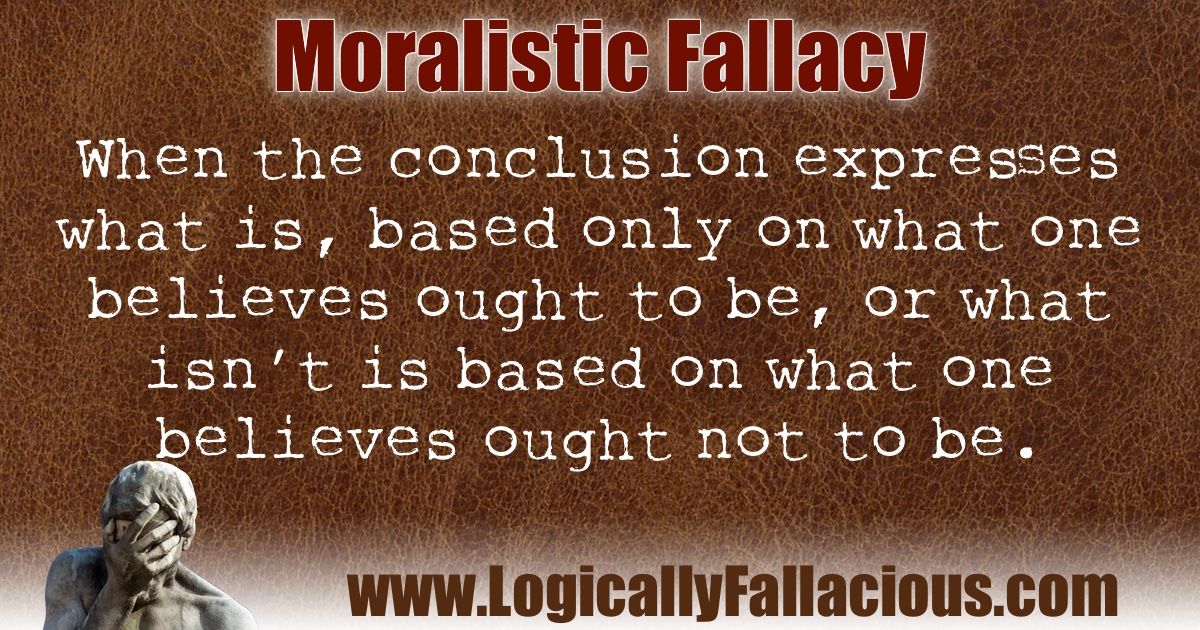(also known as: moral fallacy)
Description: When the conclusion expresses what is, based only on what one believes ought to be, or what isn’t is based on what one believes ought not to be.
This is the opposite of the naturalistic fallacy.
In his 1957 paper, Edward C. Moore defined the moralistic fallacy as the assertion that moral judgments are of a different order from factual judgements. Over the years, this concept has been simplified to deriving an “is” from an “ought.”
Logical Forms:
X ought to be.
Therefore, X is.
X ought not to be.
Therefore, X is not.
Example #1:
Adultery, as well as philandering, is wrong.
Therefore, we have no biological tendency for multiple sex partners.
Explanation: While, morally speaking, adultery and philandering may be wrong, this has no bearing on the biological aspect of the desire or need. In other words, what we shouldn’t do (according to moral norms), is not necessarily the same as what we are biologically influenced to do. Also note that moral judgments are more commonly stated as facts (e.g., “philandering is wrong”) than expressed as “oughts” (e.g., “philandering ought to be wrong”). This causes people to confuse the naturalistic and moralistic fallacies.
Example #2:
Being mean to others is wrong.
Therefore, it cannot possibly be part of our nature.
Explanation: While, morally speaking, being mean to others may be wrong, this has no bearing on the biological aspect of the desire or need. Again, what we shouldn’t do (according to moral norms), is not necessarily the same as what we are biologically influenced to do.
Exception: An argument can certainly be made that an ought is the same as an is, but it just cannot be assumed.
Fun Fact: The naturalistic and the moralistic fallacies are often confused with the appeal to nature fallacy. One reason, perhaps, is because what is “natural” is another way of saying what is, is. But with the naturalistic and the moralistic fallacies, the conclusion does not have to be based on what is “natural;” it just has to be based on what is. For example,
Men and women ought to be equal. Therefore, women are just as strong as men and men are just as empathetic as women.
This is another example of the moralistic fallacy but not an appeal to nature.
